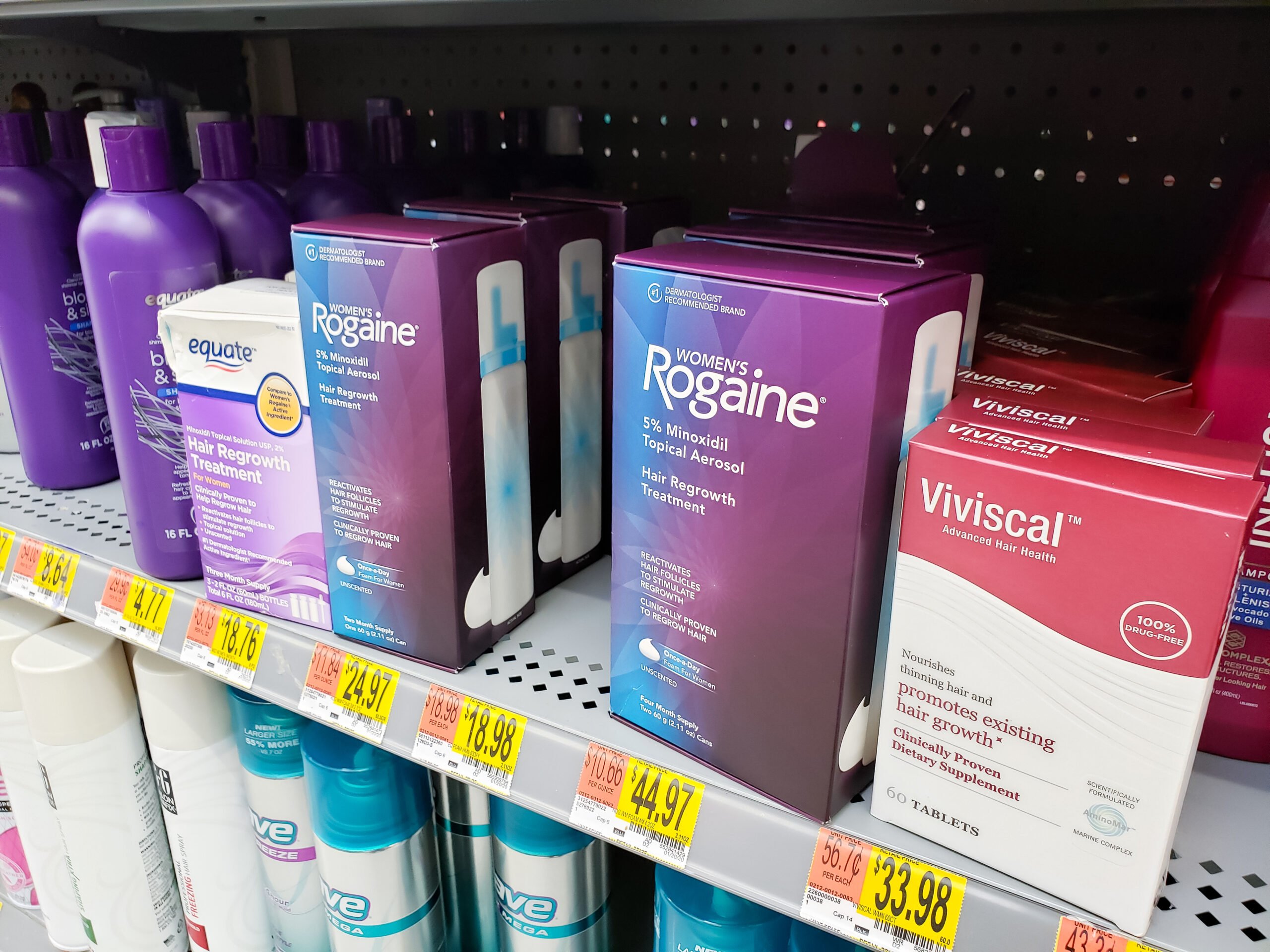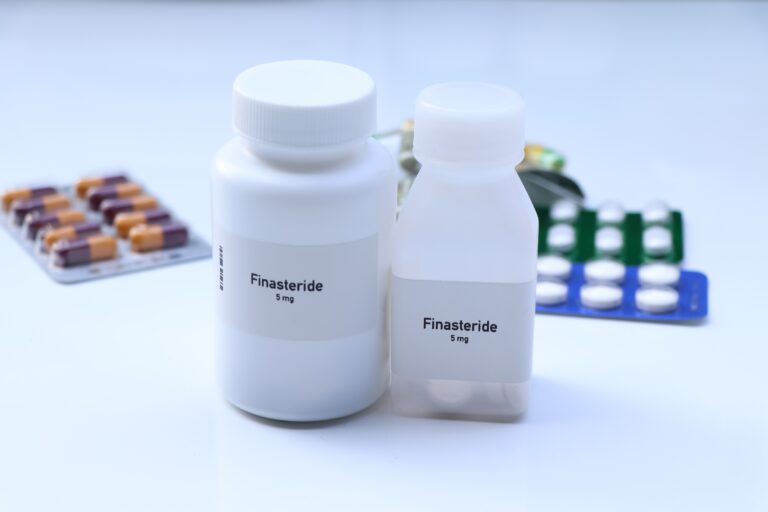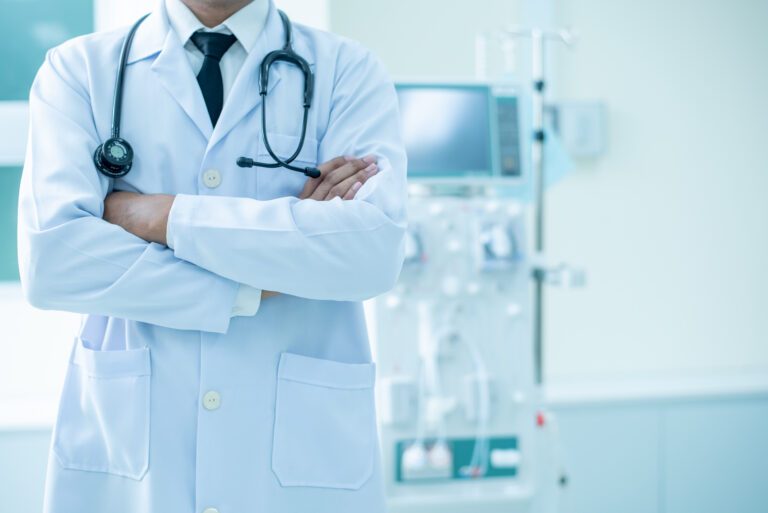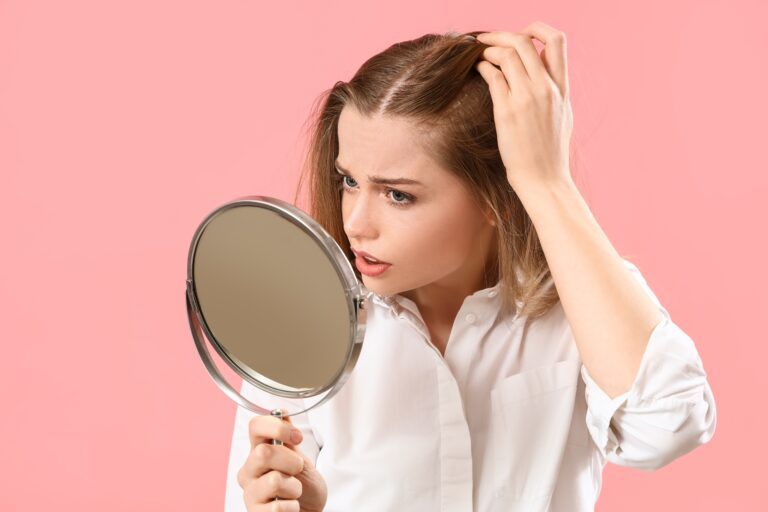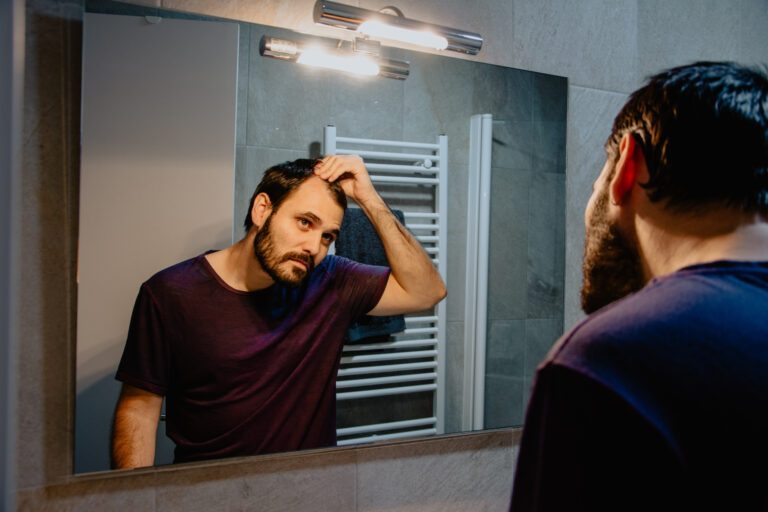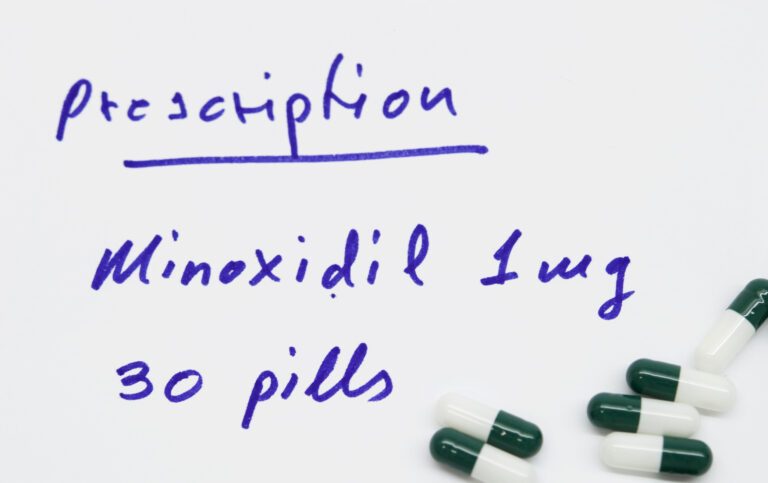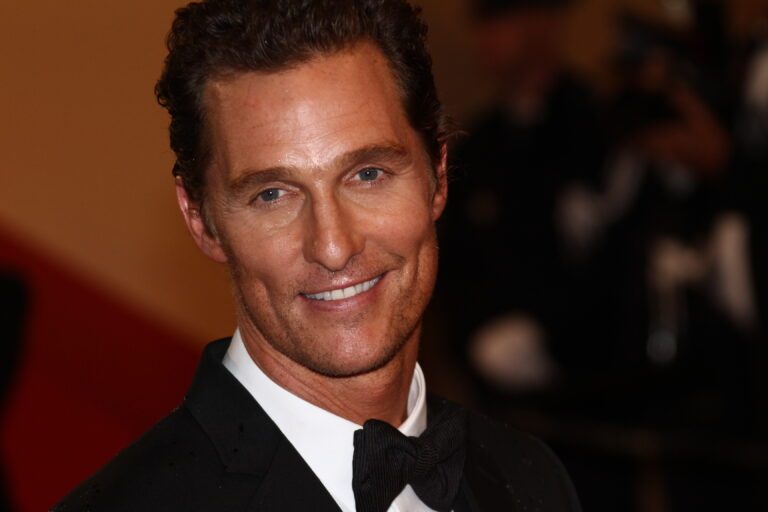10 of The Most Effective Alternatives To Minoxidil (Rogaine)
Minoxidil, known commercially as “Rogaine”, is one of the most popular treatments for hair loss. The treatment is available as topical solutions/foams (non-prescription) as well as oral tablets (prescription only).
Despite being highly effective, a lot of people might consider Rogaine alternatives for many reasons. For example, to avoid its routine commitment or side effects.
However, finding reliable alternatives to minoxidil can be somewhat tricky, as there are tons of options available and not many of them are quite effective, and that’s where this guide comes in handy!
In today’s article, we’ll walk you through 10 of the most effective minoxidil (Rogaine) alternatives.
The guide will include a variety of options, such as natural treatments, ayurvedic medicine, modern therapy, medications, and more. So without further ado, let’s dive in!
1. Essential Oils
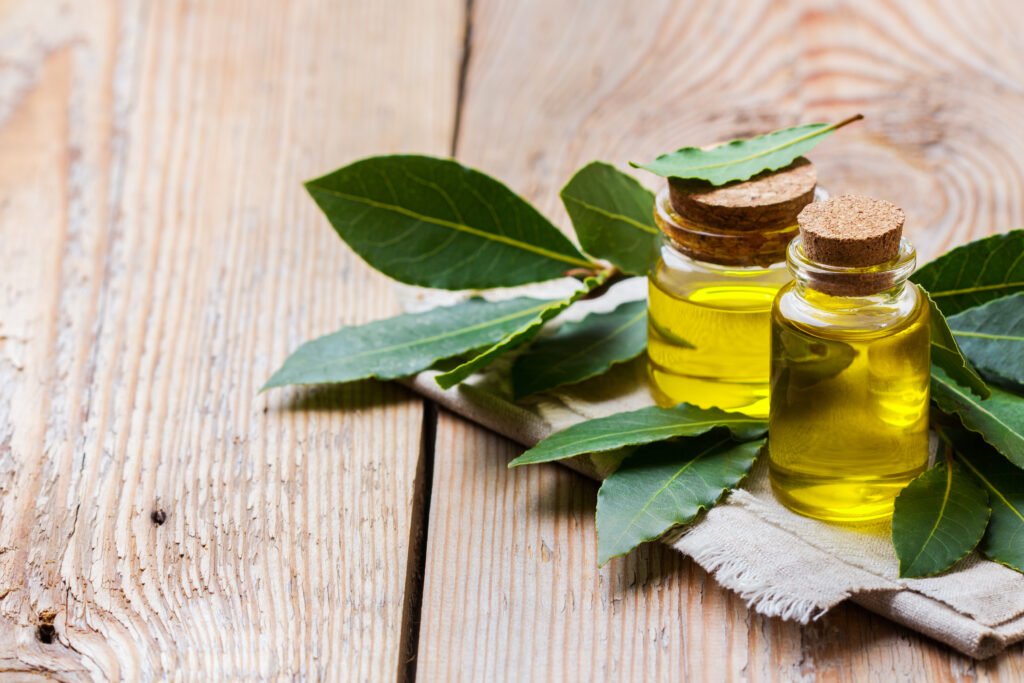
Starting off with one of the simplest alternatives that could be quite effective for mild and regular hair loss.
Essential oils are natural oils extracted from different plants. These volatile oils are used for a wide range of purposes and different types can have unique properties that make them stand out in different fields.
In fact, scientists found essential oils effective when it comes to hair treatment and improving hair growth.
Rosemary Oil
One of the most notable examples here is rosemary oil, which showed excellent hair growth results during randomized trials against Minoxidil 2% solution.
In the study, both rosemary oil and minoxidil users showed almost similar effects after using the treatment for 3 to 6 months. However, scalp itching was much less common among the group that used rosemary oil.
Scientists don’t exactly know how rosemary oil helps in hair growth, but the most common theory is that it stimulates blood flow into hair follicles, delivering more nutrients and oxygen necessary for nourishment.
Besides its hair-growing capabilities, rosemary oil is also a natural anti-inflammatory, so it’s quite gentle and safe when applied to sensitive skin.
Combined with its antibacterial effect, rosemary oil can also reduce the irritation caused by dandruff and flaking.
Pumpkin Seed Oil
In addition to rosemary oil, pumpkin seed oil is another natural minoxidil alternative that many alopecia patients found quite effective.
Similar to rosemary oil, many studies were conducted to evaluate the effectiveness of pumpkin seed oil in promoting hair growth. The largest one was a randomized controlled trial published in 2014.
According to the findings of this study, the average hair follicle count increased by up to 40% among participants using the oil for 24 weeks when compared to those who used the placebo treatment.
Additionally, the participants didn’t show any significant side effects like skin irritation or scalp itching (common minoxidil side effects) after using the oil.
Studies of pumpkin seed oil show that it works by inhibiting the enzyme that causes hair follicle thinning, which explains its high effectiveness.
2. Saw Palmetto
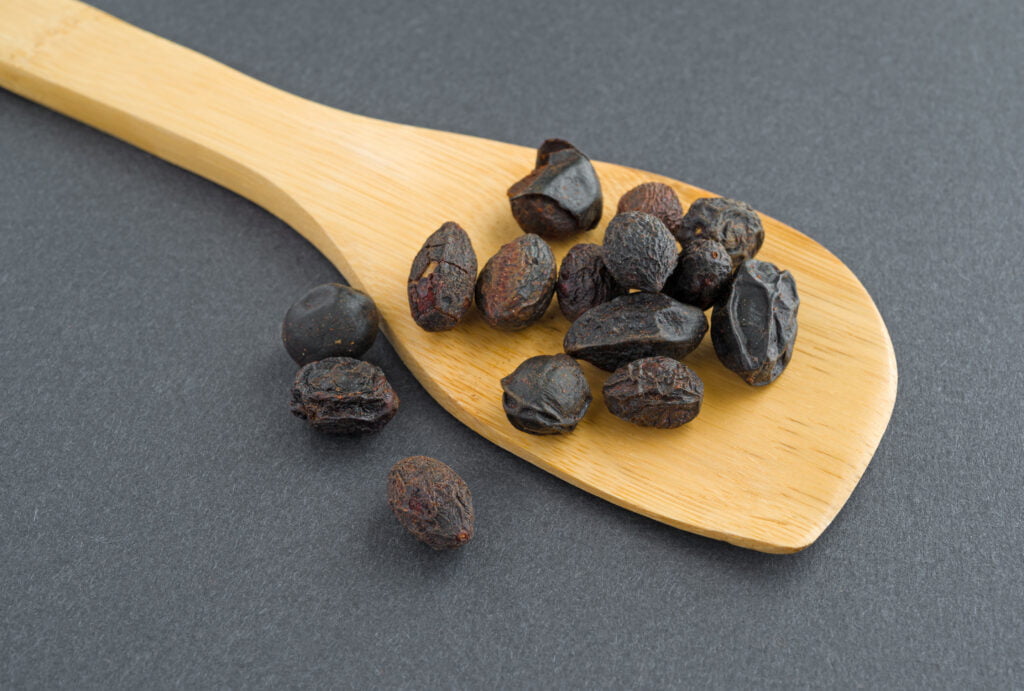
Saw palmetto, scientifically known as “Serenoa repens”, is a shrub-like plant that is originally native to the southeastern US.
The natural extract derived from the plant’s fruit is a common ingredient in many treatments and natural remedies, including hair growth, enlarged prostate, and improving urinary functions.
The secret behind saw palmetto extract lies in its medicinal properties. Studies found that this extract can inhibit Dihydrotestosterone (DHT), which is an enzyme responsible for male pattern baldness and hair thinning.
In fact, saw palmetto is often a common ingredient in organic and natural hair growth serums and is suitable for both men and women experiencing hair thinning or hair loss.
Unlike essential oils, saw palmetto extract can be used either topically by applying directly to the scalp, or orally through extract capsules. The common oral dose of saw palmetto extract is around 320 mg per day.
While some alopecia patients find saw palmetto quite effective, there wasn’t enough scientific data that support its effectiveness. However, scientists conducted several studies to test its effects in recent years.
For example, in 2020, a small-scale study of saw palmetto hair growing capabilities found that the treatment shows a 27% increase in hair follicle count while increasing hair density in 83% of the patients.
All in all, saw palmetto is a highly promising natural alternative to minoxidil for promoting hair growth. Yet, the results may vary among users and more scientific data is necessary to understand its effects.
3. Biotin

Biotin is the common name for “vitamin B7”, which is a water-soluble vitamin that exists naturally in a wide variety of food sources, such as eggs, bananas, and milk.
To understand how biotin helps in the treatment of hair loss, let’s have a closer look at its role in our bodies and what it does.
Biotin plays a critical role in assisting many enzymes to do their functions. Among these enzymes are the ones responsible for the production and fortification of keratin. For those who don’t know, keratin is the protein that makes up our hair, skin, and nails.
For that reason, the lack of biotin can render hair follicles thin and prone to falling off easily. On the other hand, providing the body with enough biotin helps in creating better keratin structures, and therefore, stronger hair.
The daily requirements of biotin vary according to age, but it typically ranges between 20 to 30 micrograms per day for people aged 14 or above.
Those who suffer from biotin deficiency will notice a variety of health problems, including hair thinning and hair loss. In that case, using biotin supplements can greatly reduce hair loss and restore hair quality and thickness.
Biotin is available in various forms, including oral supplements and as an ingredient in topical hair serums and formulas.
Studies show that the effectiveness of biotin treatments is much higher among those who already suffer from biotin deficiency, and the hair quality usually improves within a few weeks to a few months.
4. Finasteride/Dutasteride
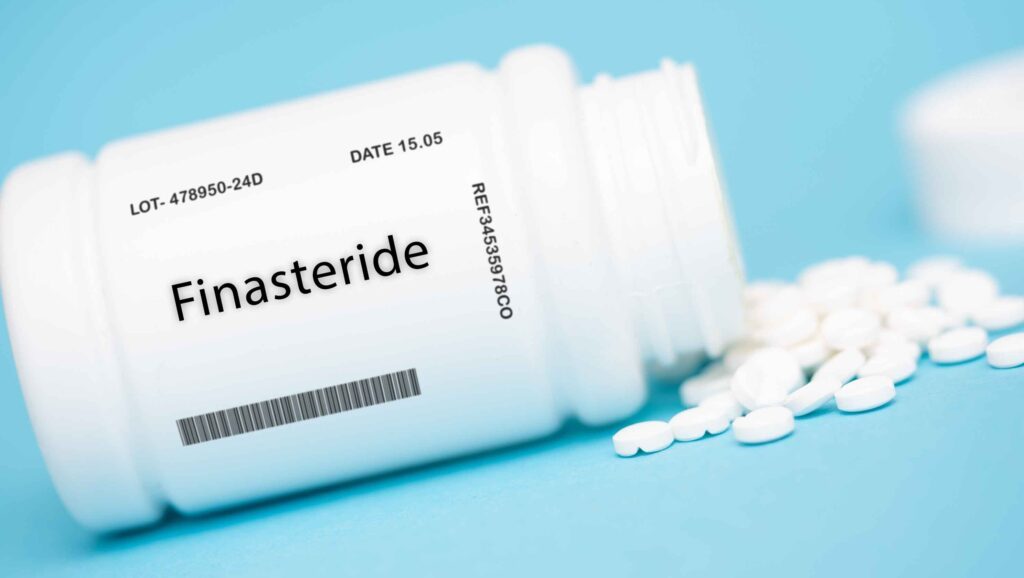
Besides Minoxidil, Finasteride is the only other medication approved by the Food and Drug Administration (FDA) for the treatment of hair loss and male pattern baldness and the only oral FDA-approved treatment for the condition.
Finasteride is the name of the active ingredient of the treatment. However, it’s available on the market under a variety of brand names, such as “Propecia” and “Proscar”.
Together with minoxidil, they make up the market share majority in the hair loss treatment industry, with over $31 billion in revenue. They’re also expected to grow up to 4.8% by 2028, which shows how effective these treatments are when compared to other alternatives.
The treatment has been around since the late 1980s as a treatment for benign prostatic hyperplasia (prostate enlargement) but was then approved as a treatment for hair loss in 1992.
On the other hand, Dutasteride was released in 2001 and is only approved by the FDA as a treatment for prostate enlargement.
Both Dutasteride and Finasteride belong to the same class of medication and have a similar mechanism of action. However, Dutasteride is slightly more potent and is yet to be approved by the FDA as a hair loss treatment, despite being prescribed by doctors for that purpose.
How They Work
Male pattern baldness is caused by a hormone called dihydrotestosterone (DHT), which binds to hair follicle receptors in the scalp, causing the hair follicles to shrink and fall off.
The effect of this hormone depends on individual genetics and the amount of hormone released into the bloodstream.
This hormone is a byproduct of testosterone metabolism, in which an enzyme called “5-α (5-alpha) reductase” converts testosterone into DHT as we grow into adulthood, and that’s where finasteride and dutasteride come into play.
These medications inhibit the production of DHT by blocking the 5-alpha reductase, preventing it from producing excess DHT.
With time, the concentration of DHT in the blood is decreased, so they stop binding to hair follicles. As a result, hair follicles start regaining their strength.
Dose and Side Effects
Both finasteride and dutasteride are mainly available as oral tablets, which are the most effective dosage form for hair loss treatment. Yet, they also come with potential sexual side effects, such as:
- Reduced libido
- Erectile dysfunction
- Tenderness and enlargement of breasts (gynecomastia)
These side effects are the main reason why many hair loss patients avoid using the treatment, although studies show that they aren’t common (as little as 2% to 10% of men suffer from sexual side effects).
For that reason, pharmaceutical companies developed topical finasteride treatments (sprays and foams) to reduce the impact of those side effects.
Luckily, multiple studies show significant effectiveness of the treatment while reducing the sexual adverse effects of the oral route.
5. Spironolactone
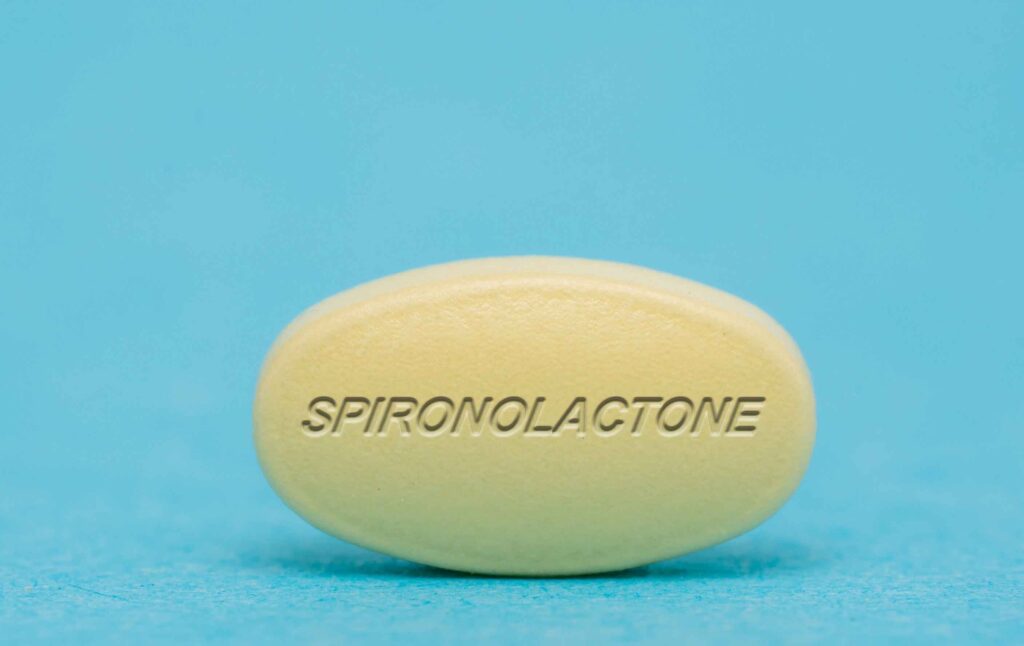
Spironolactone is a class of diuretic medication that is originally used to treat fluid build-up (edema) caused by heart failure as well as kidney and liver diseases.
The medication is available under various brand names around the world, most commonly “aldactone”.
Spironolactone has various effects on the body. It primarily works as an antagonist to the aldosterone hormone, which causes the kidney to release excess water and sodium through urine.
Besides its primary effect, spironolactone also inhibits adrenergic receptors, which effectively reduces the production of testosterone associated with hair loss.
However, this effect only works for female patients suffering from abnormal production of androgens, so it has little to no effect on males.
One study in 2015 shows that up to 74.3% of female hair loss patients who used spironolactone showed remarkable improvements after using the treatment, especially those who didn’t respond to first-line treatments like minoxidil.
Keep in mind that spironolactone is associated with various side effects among those who use it, including:
- Potassium level imbalance
- Irregularities in menstrual cycles
- Dizziness
6. Low-Level Laser Therapy
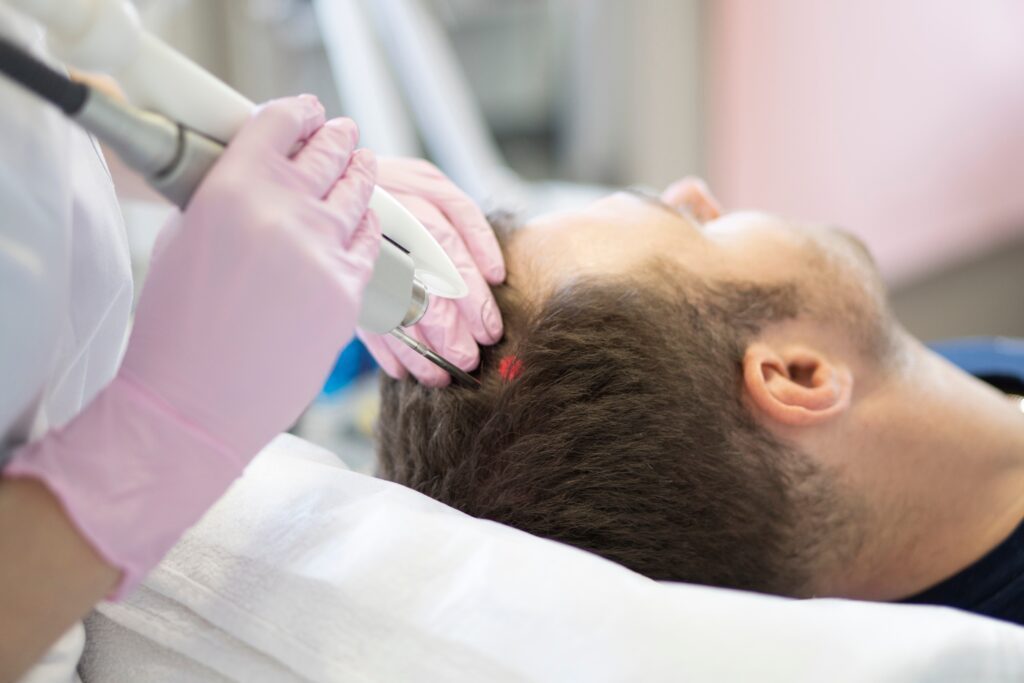
Treatments using laser therapy have been around since the late 1960s. However, they used to be quite expensive and somewhat dangerous, especially when it comes to skin-related side effects.
However, as technology advances, scientists managed to control the intensity of the laser, which allowed them to reduce its potential side effects while increasing its effectiveness.
Low-level laser therapy is also known as “low-light laser therapy” or “LLLT” for short. As the name suggests, this method utilizes the power of low-intensity photons to activate dormant hair follicles to encourage them to grow and increase in thickness by stimulating the cell’s mitochondria.
Besides hair follicles, laser therapy can be used to treat a variety of skin-related conditions, such as wrinkles, acne, and even hirsutism in women. Different machines that utilize this therapeutic technique vary depending on the manufacturer.
In most cases, you’ll need several sessions of laser therapy to achieve the intended results. However, the treatment is quite successful and many studies show the effectiveness of the treatment when it comes to alopecia and hair loss.
A recent study in December 2021 shows that over 83% of those who tried low-light laser therapy were satisfied by its results, with up to a 120% increase in hair growth in the vertex area in males. Yet, the treatment is effective for both men and women.
The cost of these treatments varies according to several factors, ranging from as little as $50 to $150 per session.
7. Micro-needling (Dermarolling)
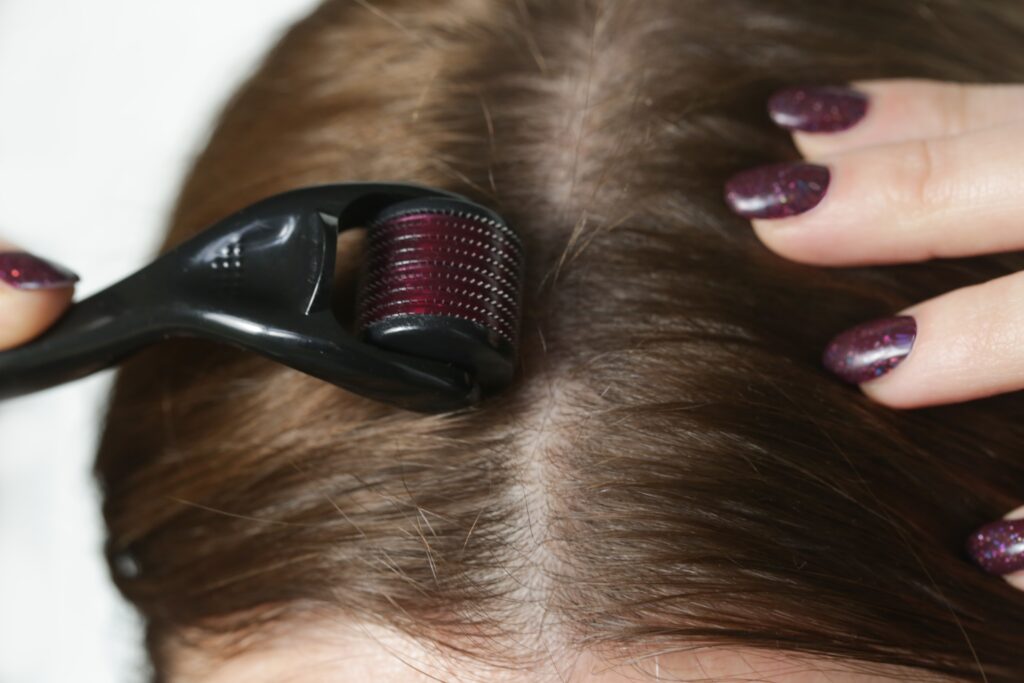
Many forms of traditional medicine noted that scalp massage can increase hair growth by improving blood circulation, which strengthens hair follicles and protects them from falling off due to alopecia factors.
Microneedling and micro-channeling exploit these facts by taking circulation activation to the next level.
This technique involves the use of microscopic needles to create extremely tiny holes in the top layer of the skin, hence the name.
Dermarolling is quite similar to micro-needling, which includes the use of a special tool that you roll over the skin at home, giving fairly similar results.
These procedures create small-scale damage to the top layer to stimulate the healing process encouraging the skin to produce more collagen, elastin, and keratin (the hair protein).
These results were confirmed by several studies, including one that found significant improvement in hair count after over 12-week sessions.
The only downside of these procedures is that they’re minimally invasive, which can cause potential scarring if not done by a professional.
8. Acupuncture
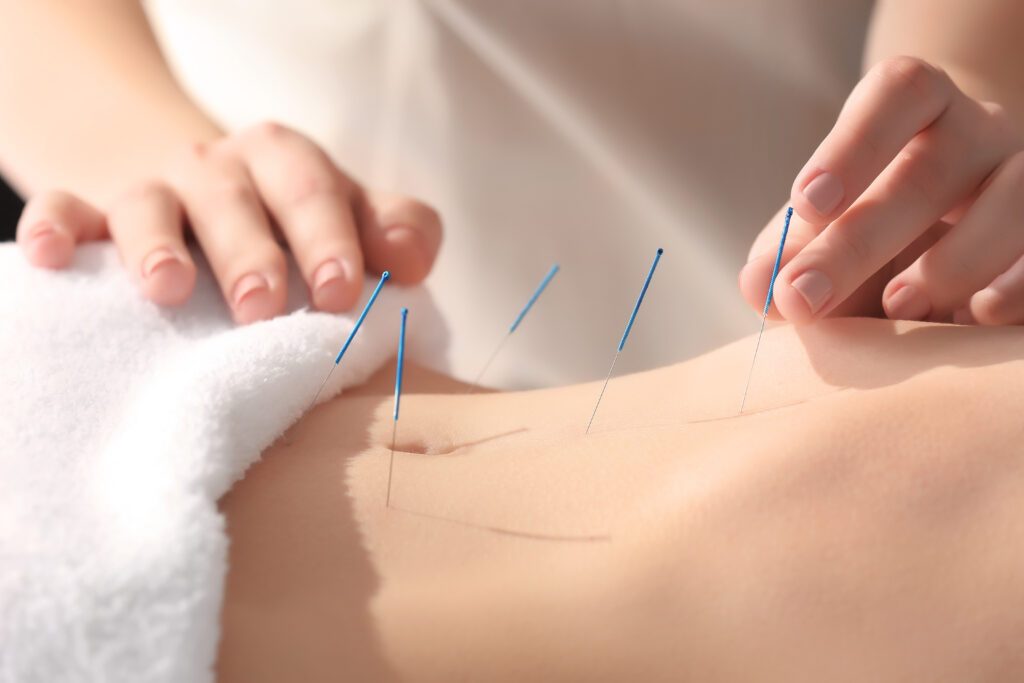
Acupuncture is the leading ayurvedic substitute for minoxidil, which isn’t only effective for hair growth, but also for other aspects of health, such as:
- Soothing general body aches, especially back and neck pain
- Reducing headaches and migraines
- Relieve symptoms of stress and nausea
Acupuncture has been around for 3,000 years and originated in China. However, its effectiveness helped it spread all over the world and is still standing as a powerful treatment method to this day.
Scientific studies found that acupuncture works by stimulating the nervous system, which encourages the body to release certain enzymes and hormones that manifest its effects.
Besides its original benefits, applying acupuncture therapy on the scalp was associated with hair regrowth after 3 months of treatment.
9. Oral and Topical Supplementation
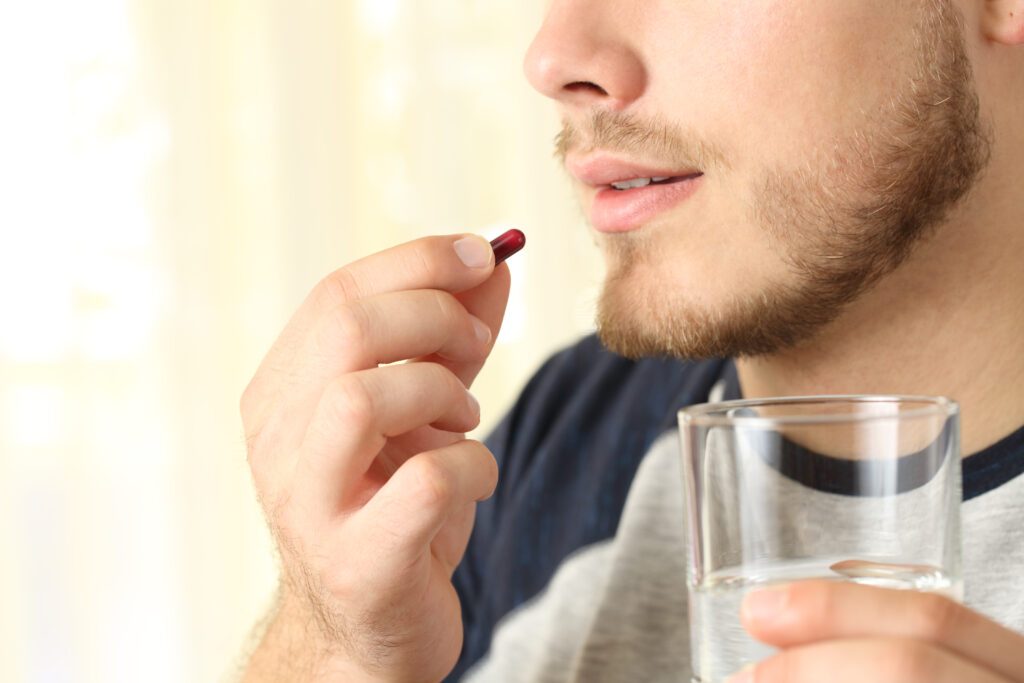
As previously established, biotin is often used as an oral supplement to treat hair loss. However, it’s not the only micronutrient that is essential for healthy hair growth.
Many oral supplements can be used as natural rogaine alternatives, which don’t only encourage hair growth, but can also improve the overall quality of the hair follicles.
These ingredients are often bundled together in high-quality oral supplements for hair growth. Besides biotin, the most popular ones include:
- Zinc: A critical component in many enzymes that promote hair growth and prevent hair loss due to alopecia. Naturally found in red meat, chicken, and nuts.
- Collagen and Keratin: Essential ingredients that are required to build hair follicles. The use of collagen and keratin to promote hair growth is proven effective in various studies and clinical trials.
- Amino acids (such as Cysteine, Glycine, Lysine, and Proline): the deficiency of certain types of amino acids can trigger alopecia and increase its effects, which can be reversed by proper supplementation, according to studies.
10. Topical Hair Stimulants
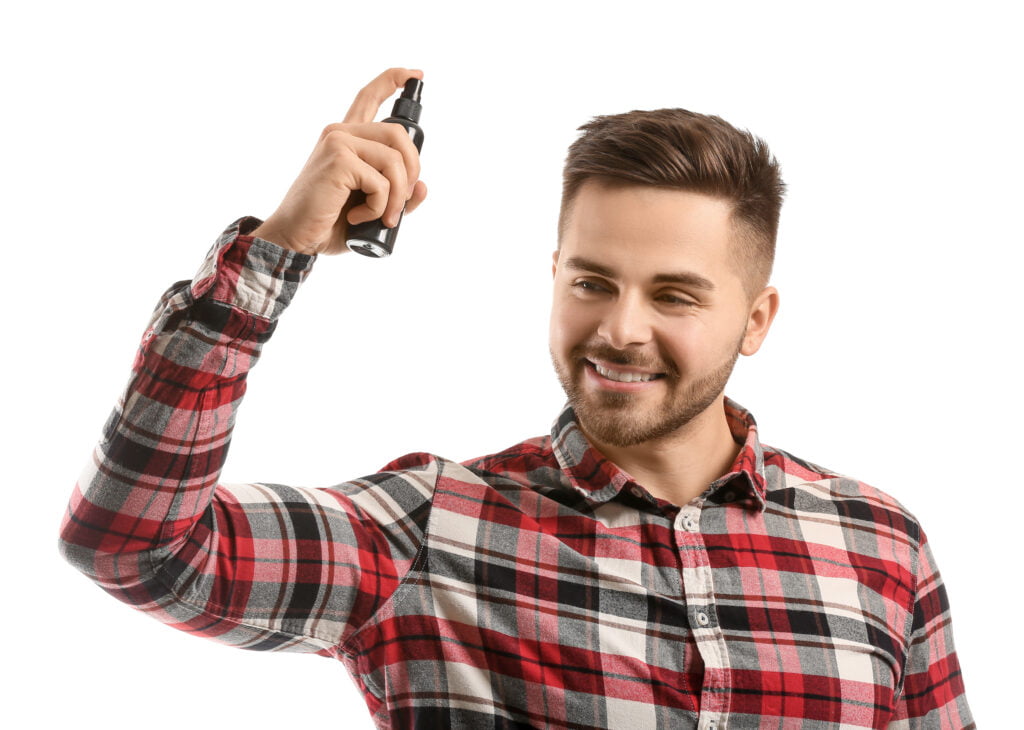
In addition to oral supplementation, the use of topical hair stimulants is another highly effective method to treat hair loss.
Most topical hair stimulants contain a variety of ingredients, which are proven to increase hair growth and reduce the effects of alopecia, such as caffeine, capsaicin, and curcumin.
These stimulants can be used with or without minoxidil. However, you should seek medical advice from a pharmacist or a physician before combining medications for the best results.
Wrap Up
This marks the end of today’s guide which walks you through all the different minoxidil and Rogaine alternatives that can help with hair loss.
As you can see, hair loss treatment can take many forms, whether for men or women. The most effective and common alternatives for minoxidil are finasteride/dutasteride medications, whether they’re oral or topical.
New non-invasive procedures like low-level laser therapy are also showing a lot of promise when it comes to hair restoration, and surprisingly, these effective treatments are becoming more affordable with time.
If you prefer organic and natural treatments, you can also consider essential oils like rosemary and pumpkin seed oils, which provide comparative results with fewer side effects than minoxidil.

